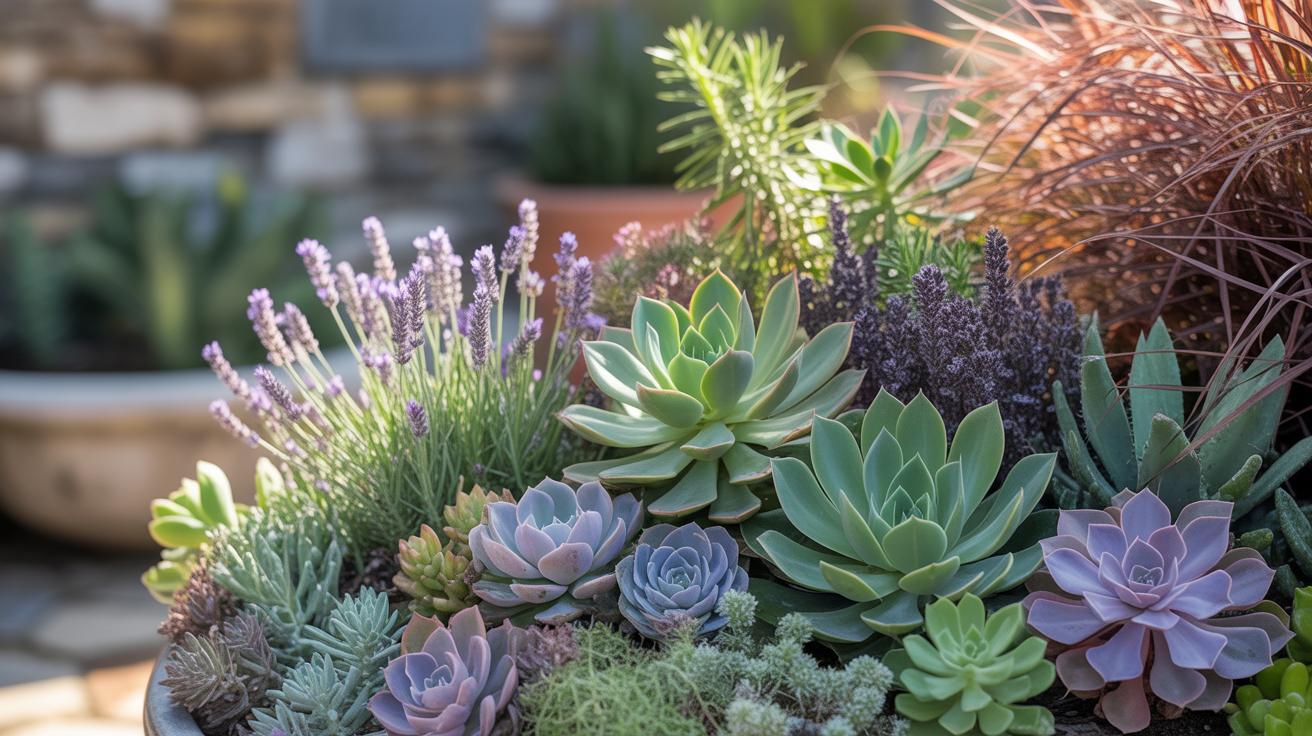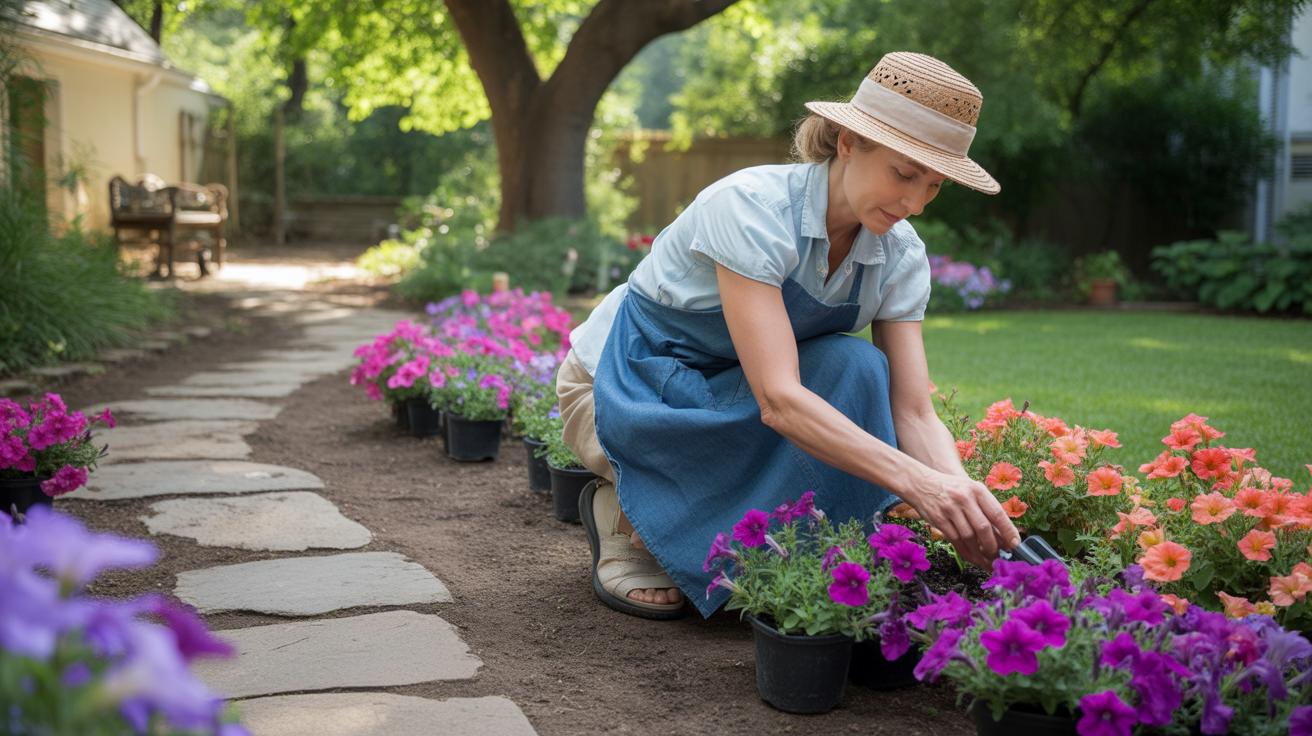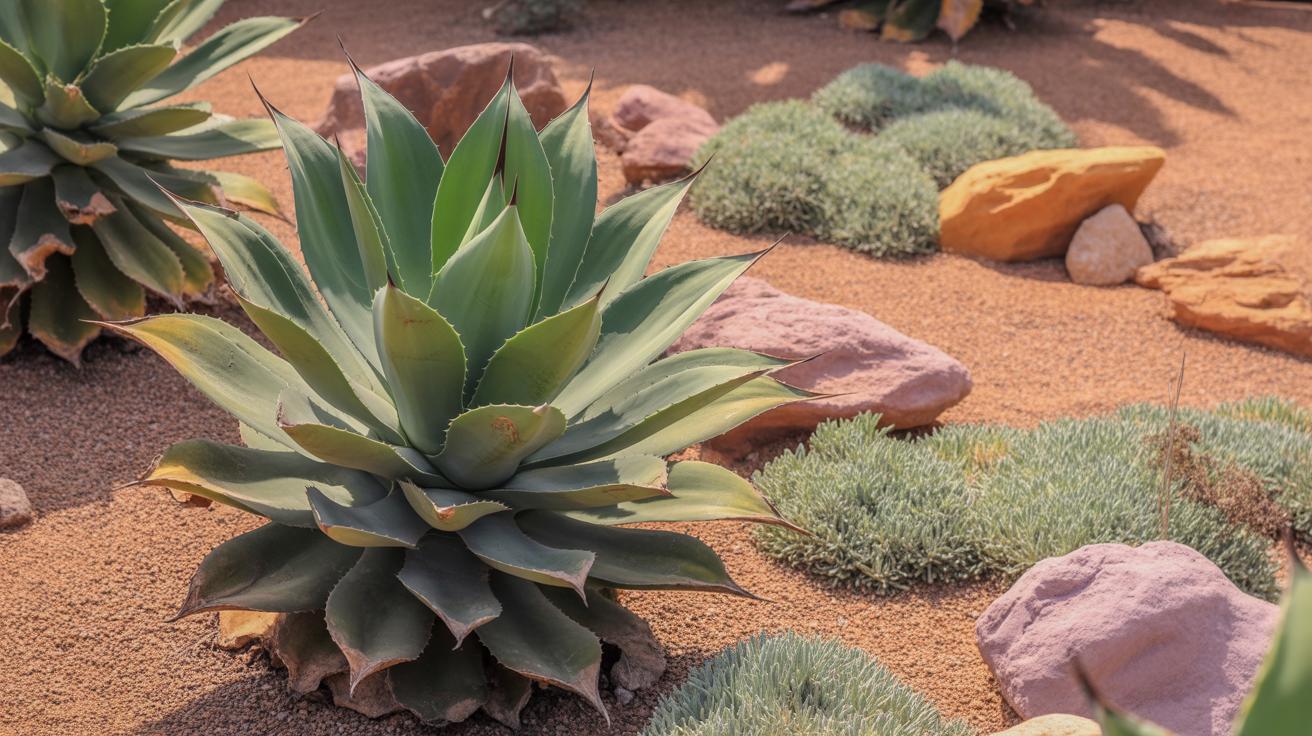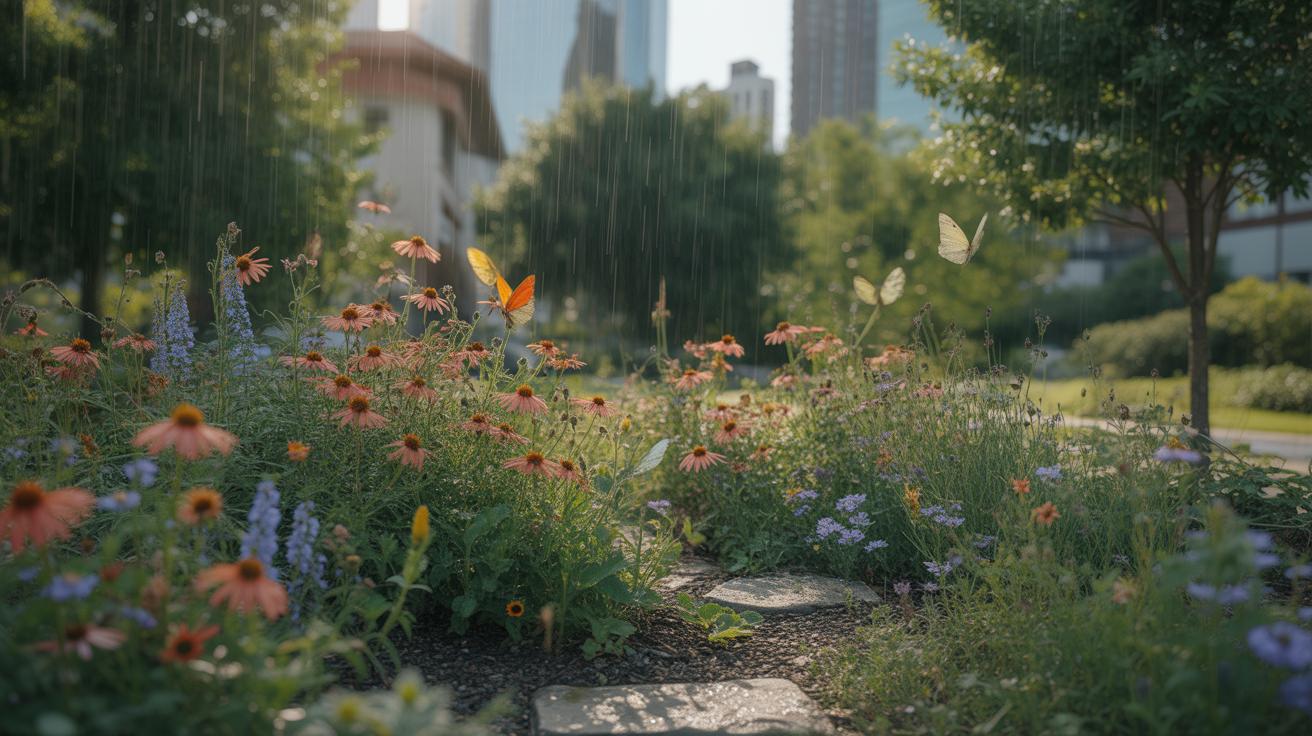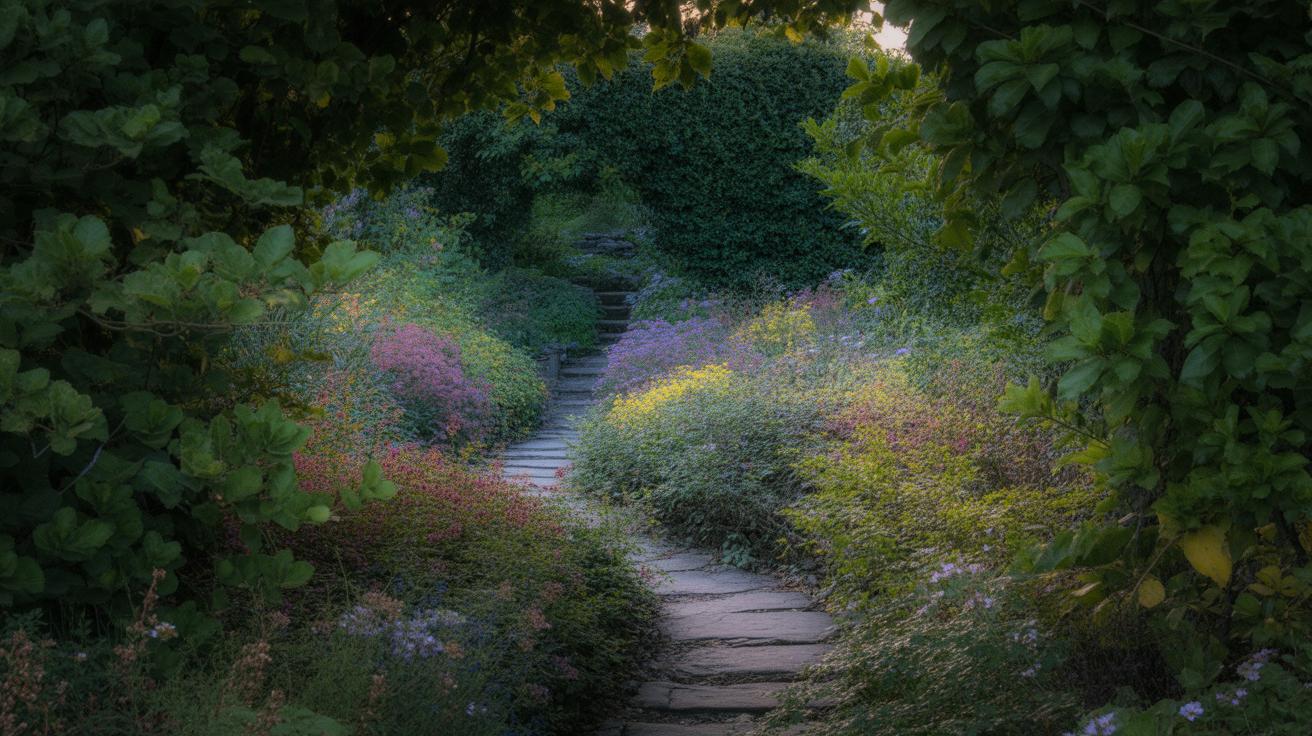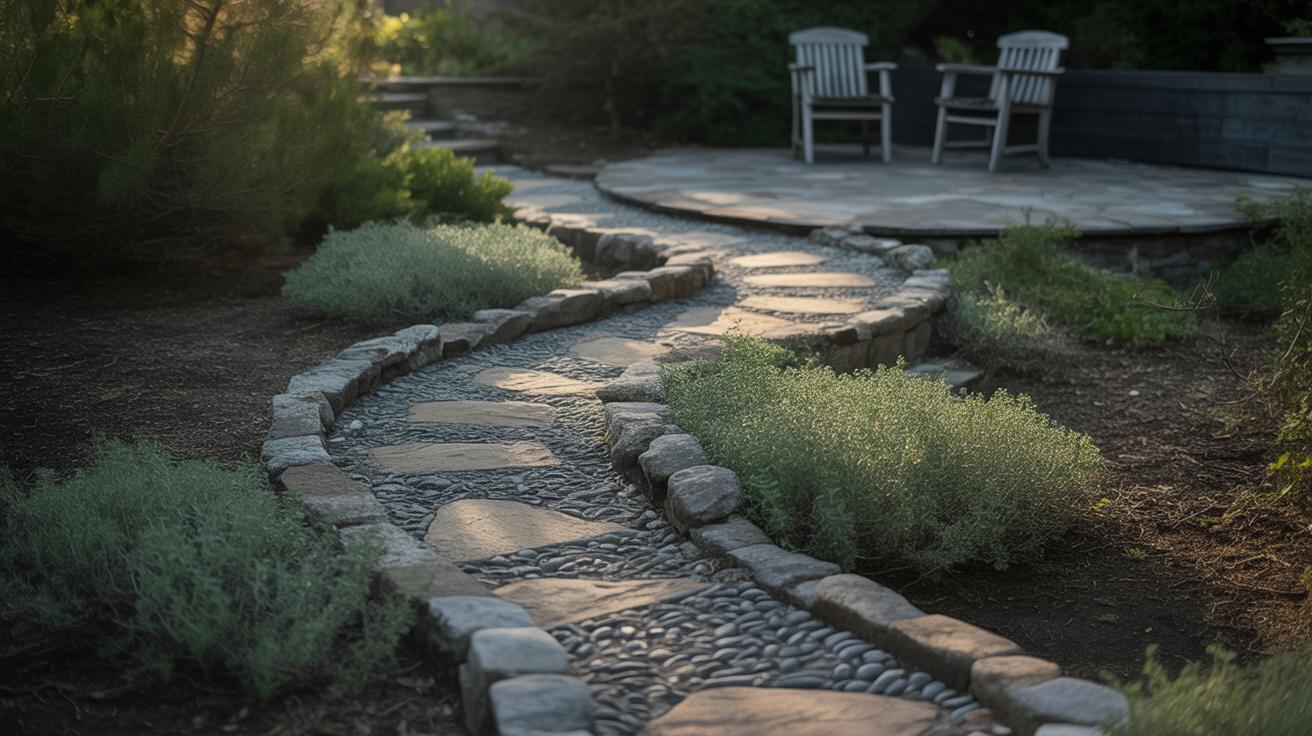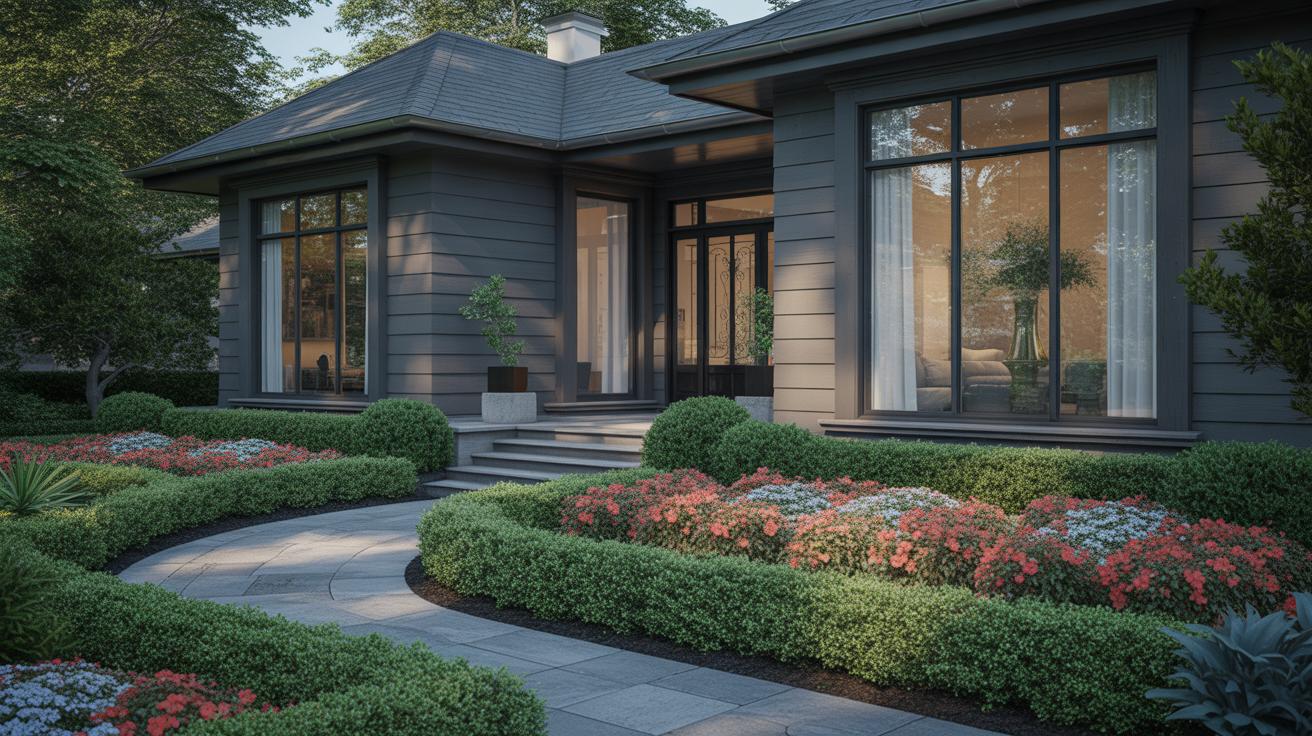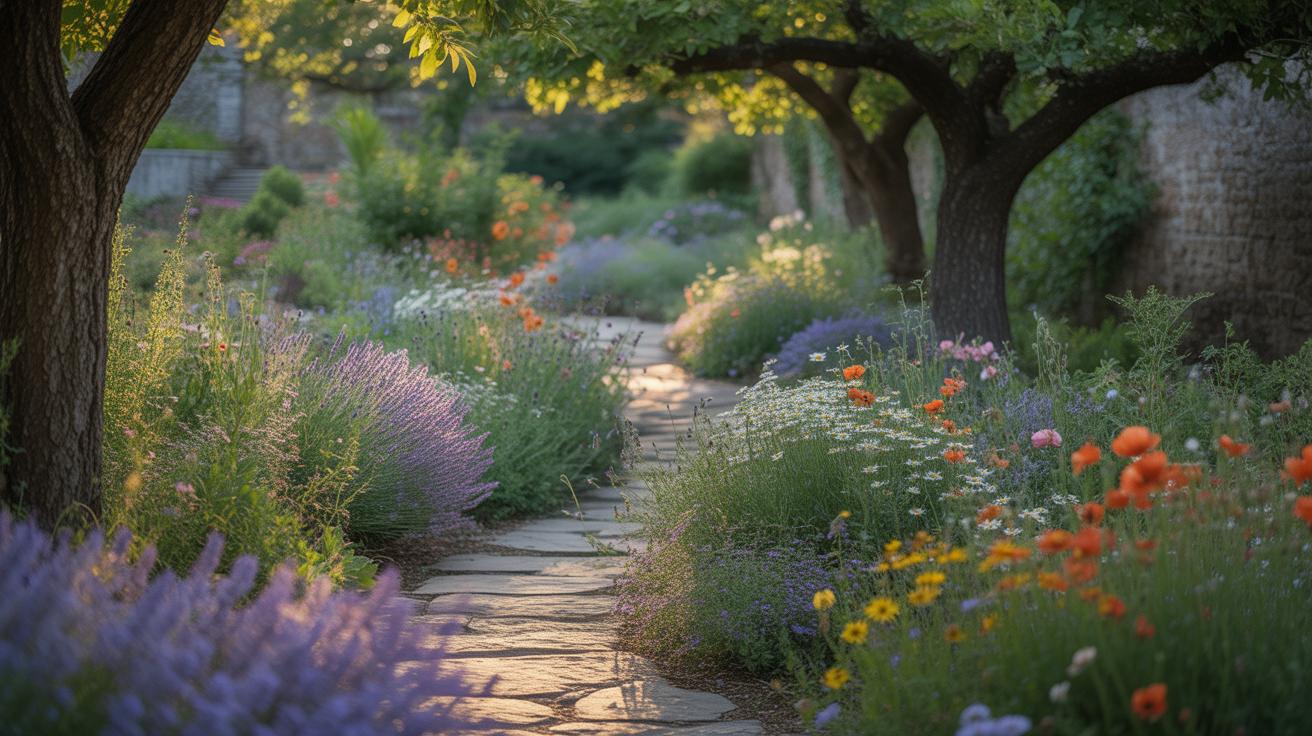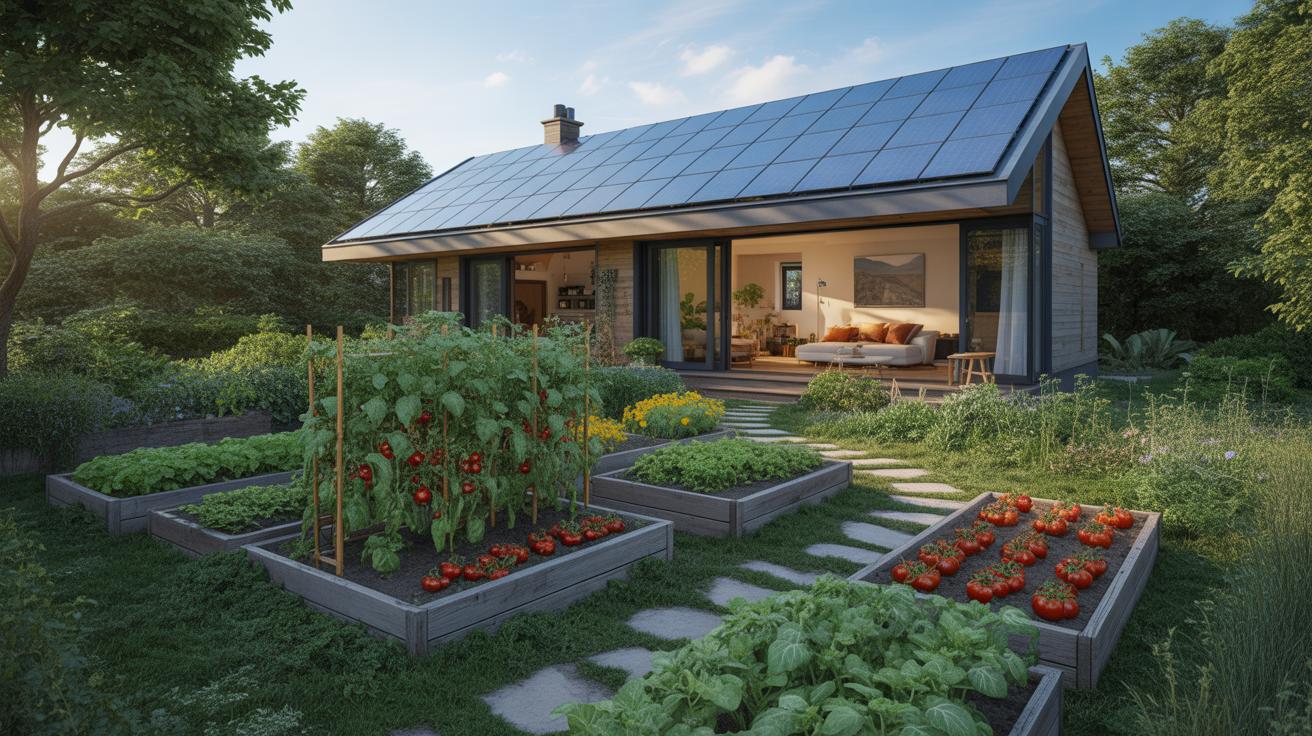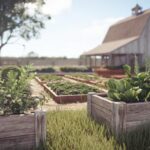Introduction
Water is important for your garden, but watering a garden can use a lot of water. Choosing plants and designs that do not need much water helps save water in your home garden. This is known as creating a drought tolerant landscape.
Drought tolerant landscapes use plants that grow well with little water. They also reduce the work you have to do to keep your garden looking good. This article will explore many ideas for making your garden use less water and still be beautiful and healthy.
Understanding Drought Tolerant Plants
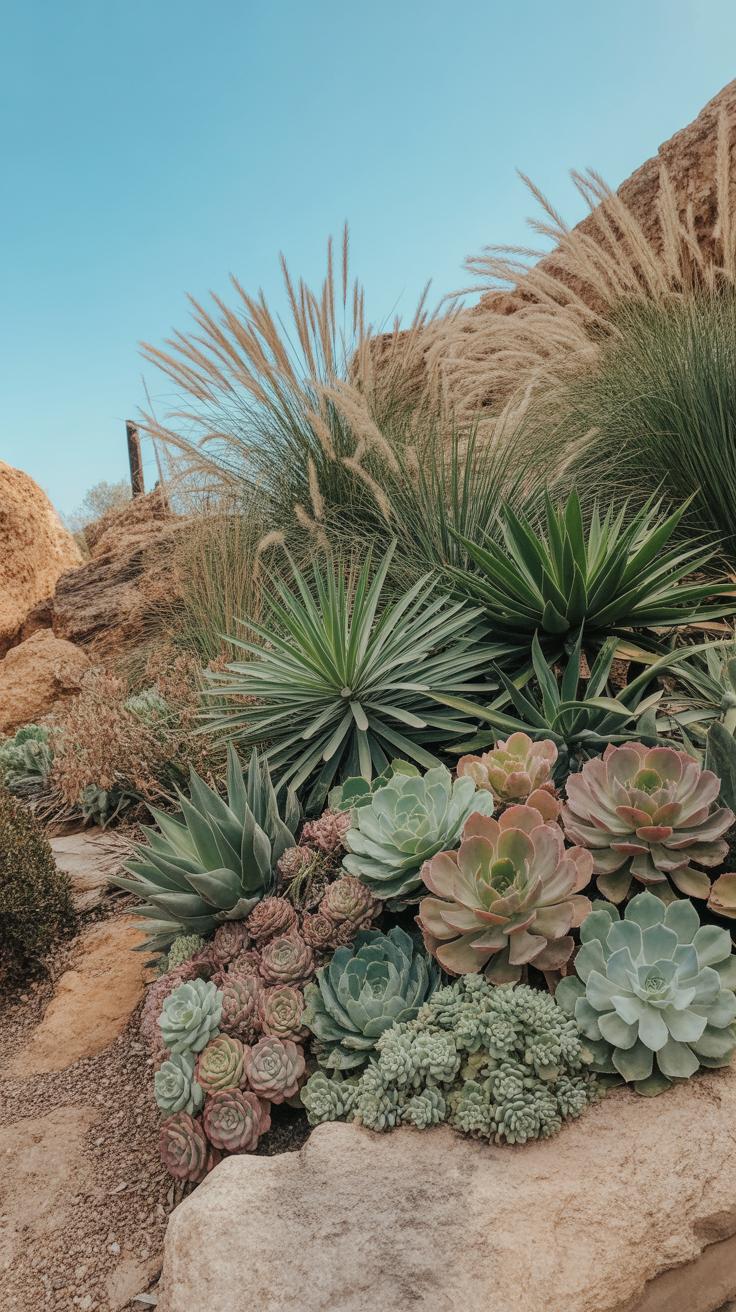
What Are Drought Tolerant Plants and Why They Matter
Drought tolerant plants can handle long stretches without much water. They’ve adapted to survive in dry or arid climates where rain is rare or unpredictable. You might wonder why this matters for your garden, especially if you live somewhere with reliable rainfall. But here’s the thing: using these plants can mean less work watering, lower water bills, and a garden that stays alive through dry spells—or even a heatwave. I’ve noticed in my own garden that plants which survive on minimal water tend to look healthier overall during those sudden hot weeks when forgetting to water becomes an issue. It’s about resilience, really—these plants cope without much fuss, which makes them valuable when you want a sustainable outdoor space.
Common Types of Drought Tolerant Plants
There’s quite a range, actually. Succulents like aloe and sedum store water in their thick leaves, making them natural survivors in dry soil. Native plants often have deep roots or tough leaves, shaped by the local climate over centuries. Then there are shrubs like lavender or oleander that can shrug off dry spells. What makes these plants tick? Usually, it’s a combination of features like waxy coatings, reduced leaf sizes, or roots that dig deep for moisture. It’s interesting how some natives might look fragile but can outlast a watered exotic plant that needs constant care.
Why Use Drought Tolerant Plants?
Practicality is a big lure. Less watering means you save time and money—not to mention the environmental gain in regions stressed by water scarcity. These plants generally demand less fuss: fewer fertilizers, less pruning. Environmentally, they can reduce runoff and erosion by stabilizing soil with their roots while lowering your garden’s water footprint. Although drought tolerant doesn’t mean zero care, it shifts how you manage your garden, maybe making it feel a bit less like work and more like watching a system find its own balance. Sometimes, after the initial struggle to settle them in, these plants settle into a sort of calm persistence that’s… well, reassuring.
Planning Your Garden Layout
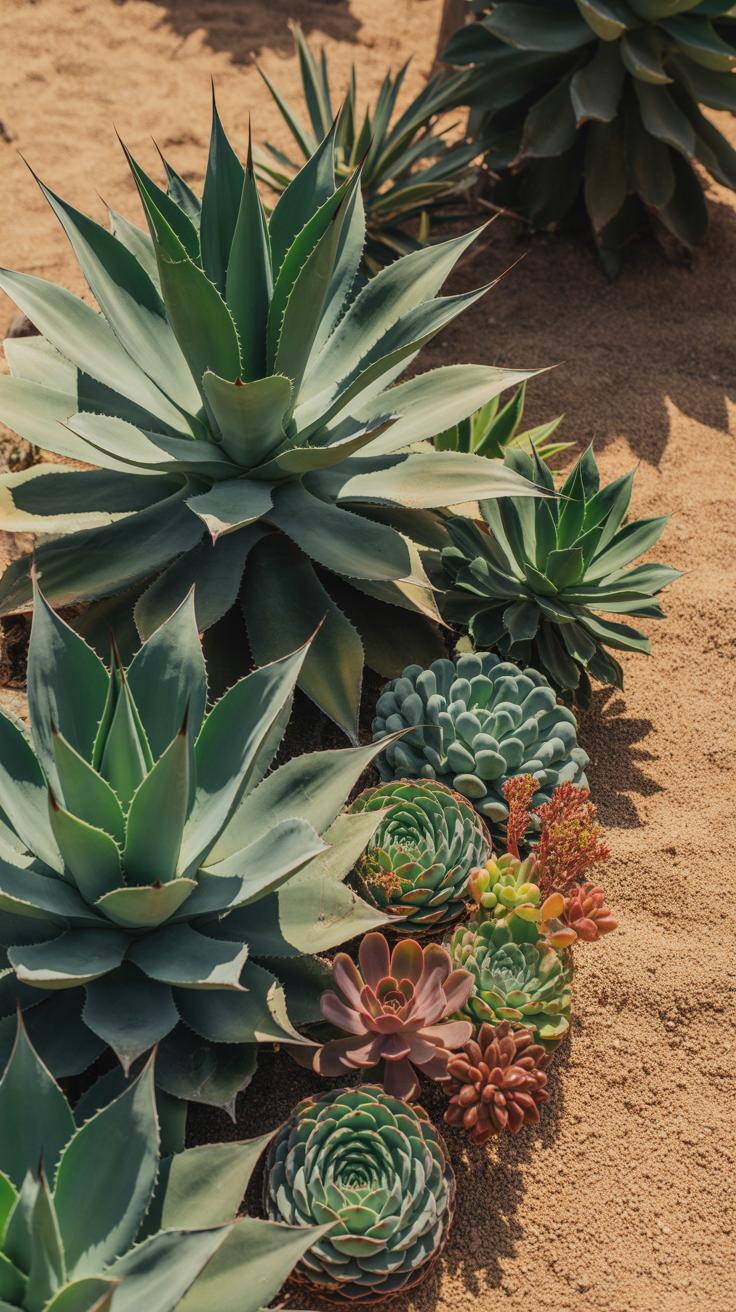
When designing your garden, grouping plants by their water needs makes a big difference. It might sound obvious, but putting thirsty plants next to drought-tolerant ones often leads to overwatering or underwatering, which doesn’t help anyone. Think of it like organizing your kitchen pantry—you wouldn’t mix spices and canned goods randomly, right? The same applies here.
Breaking your garden into zones based on how much water each plant needs lets you tailor irrigation better. For example, you could have one area with succulents and cacti that barely need watering, and another with Mediterranean herbs that prefer moderate moisture. Watering schedules can be adjusted for each zone, saving you water and keeping plants healthier.
Then, there’s the use of hardscapes—think stone pathways, gravel beds, or even decorative rocks. These don’t need any watering and reduce the amount of soil exposed. They also add texture and can make maintenance easier. Plus, they offer structure, providing clear boundaries for your plantings.
You might wonder if too much hardscape feels barren. Maybe, but a good balance between plants and hard surfaces can make your garden look planned—not neglected or empty. Plus, less lawn to water means you’re conserving more over time. Planning like this puts water conservation upfront, but it also helps your garden wear well through different seasons.
Choosing the Right Soil
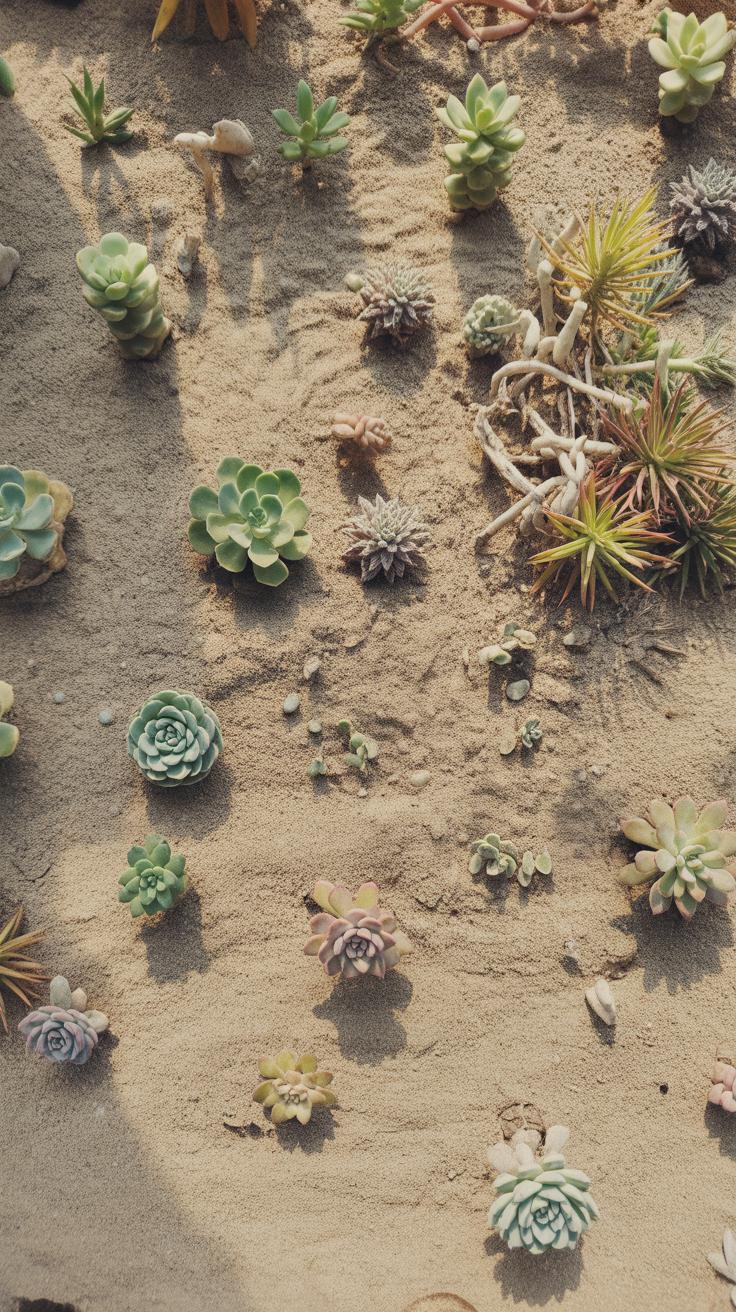
Soil Types and Water Holding
Soil plays a huge role in how well your garden handles dry spells. You might have sandy soil, which drains water quickly and doesn’t hold onto moisture well—making it tricky to keep plants happy during droughts. Then there’s clay soil. This type holds moisture for longer but sometimes stays too wet near the surface and can become compacted, which isn’t great for roots. Loam sits somewhere in between, often called the ideal mix because it balances drainage and moisture retention. But here’s the catch: many gardens aren’t pure sandy, clay, or loam—your soil could be a mix, which makes figuring out what it needs a bit of a guessing game.
To get a better feel for your soil, do a simple test by squeezing a handful. If it crumbles easily and feels gritty, likely sandy. If it’s sticky and holds shape, that’s probably clay. If it’s crumbly but holds together slightly, you might have loam. Knowing this helps you figure out how water moves through your garden and how often you’ll need to top up moisture.
Improving Soil Quality
Improving your soil can make all the difference in drought tolerance. Compost is a classic fix; mixing it in improves soil structure and adds organic matter that holds water like a sponge. I remember trying this a few years back in my garden with sandy soil—it really helped keep moisture longer, but it’s not magic. Mulch is another simple step. A good layer on top reduces evaporation, keeps roots cooler, and gradually feeds the soil as it breaks down. You could use wood chips, straw, or even shredded leaves.
One thing I’ve noticed is that improving soil takes patience. You won’t see results overnight, and sometimes it’s a bit uneven at first. But over time, your plants will thank you for soil that retains enough moisture without becoming soggy. Don’t forget to loosen compacted areas, too—roots struggle to breathe in hard soil, and that can make drought seem worse than it really is.
Watering Techniques That Save Water
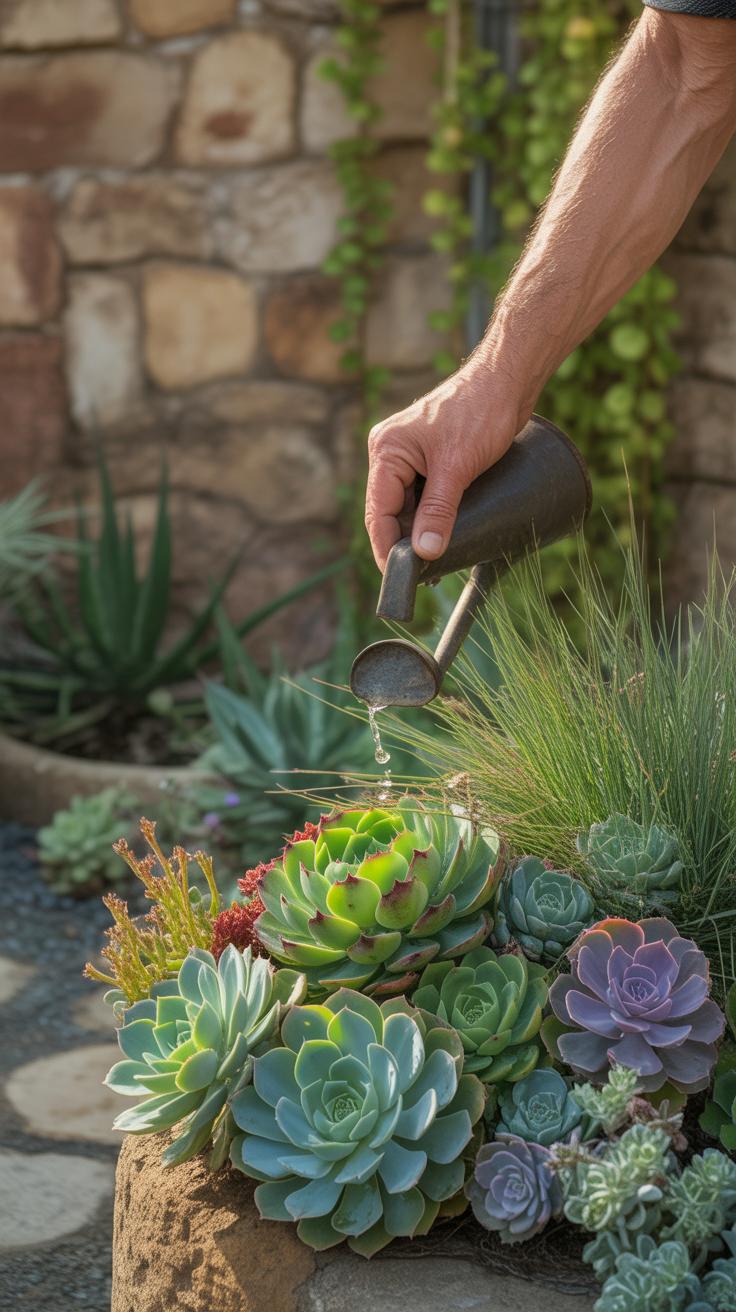
When it comes to watering your garden with less waste, the way you deliver water matters a lot. Drip irrigation or soaker hoses are often the best tools to get water straight to the roots, where plants actually need it. Unlike sprinklers that spray water all around—including paths and sidewalks—these systems soak the soil evenly and slowly. This not only saves water but also helps prevent diseases by keeping leaves dry.
I’ve tried sprinklers before; although they’re easier to set up, I noticed my lawn got soggy in places while others stayed dry. With drip irrigation, you get more control and less runoff. So, if your plants’ roots are where the water goes, could you be watering smarter?
Efficient Irrigation Systems
Drip irrigation systems use tiny emitters that release water drop by drop. This steady feeding encourages deep roots and limits evaporation. Soaker hoses work similarly, but they seep water along their length, which can be great for rows of vegetables or flower beds.
Both systems reduce water waste because they target the soil directly instead of wetting leaves or hard surfaces. It’s also easier to see where your water is going, so you can adjust the amount if you feel it’s too much or too little. Compared to sprinklers, this makes a noticeable difference, especially in drier climates or during heat waves. Though I’ll admit, setting up drip irrigation can be a bit fiddly the first time—still, it pays off.
Best Times to Water
Timing plays a key role too. The coolest parts of the day—early mornings or late evenings—are ideal for watering. If you soak plants in mid-afternoon heat, much of the water evaporates before roots capture it. Mornings often work better; the soil is cooler, and plants have the whole day to dry off, which reduces fungal risks.
Occasionally, I found evening watering tempting because it’s more convenient, but it sometimes left my garden a bit damp at night, which didn’t feel right. Morning watering, despite the early wake-up, seems to hit the balance between saving water and keeping plants healthy.
Mulching for Moisture Control
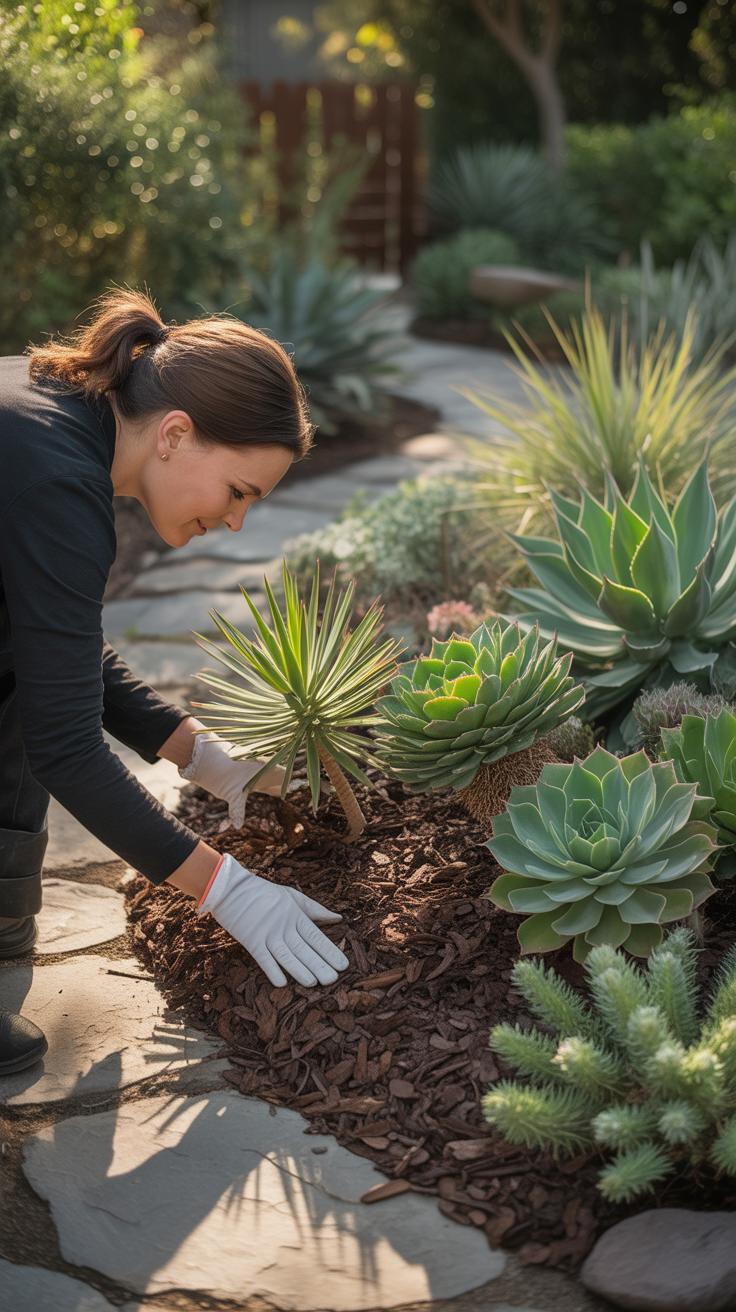
Mulch acts like a simple shield over the soil, helping to hold in moisture and keeping the roots of your plants cooler on hot days. By covering bare soil, mulch reduces evaporation, which means less watering is needed—a real plus in dry conditions. It also protects plants from temperature swings that can stress them when water is scarce.
There are lots of mulch options that suit drought-tolerant gardens. Organic mulches like shredded bark, straw, or composted leaves slowly break down, adding nutrients back into the soil while retaining moisture. Inorganic mulches—think gravel, crushed stone, or landscape fabric—don’t improve soil fertility but do a good job blocking sunlight and preventing evaporation.
When you apply mulch, it’s best to spread a layer about 2 to 4 inches thick but avoid piling it directly against stems or trunks. Leaving a small gap prevents moisture-related rot while still protecting roots and conserving water. Applying it evenly helps reduce water loss, but sometimes you may need to move mulch away briefly during watering so water reaches the soil effectively.
Have you ever wondered how much of a difference mulch could make in your garden’s water needs? For me, adding mulch cut down watering time noticeably, though I still keep an eye out for mulch that’s drying too quickly in the sun. Maybe that’s just the gardener’s cautious nature kicking in.
Selecting Native Plants
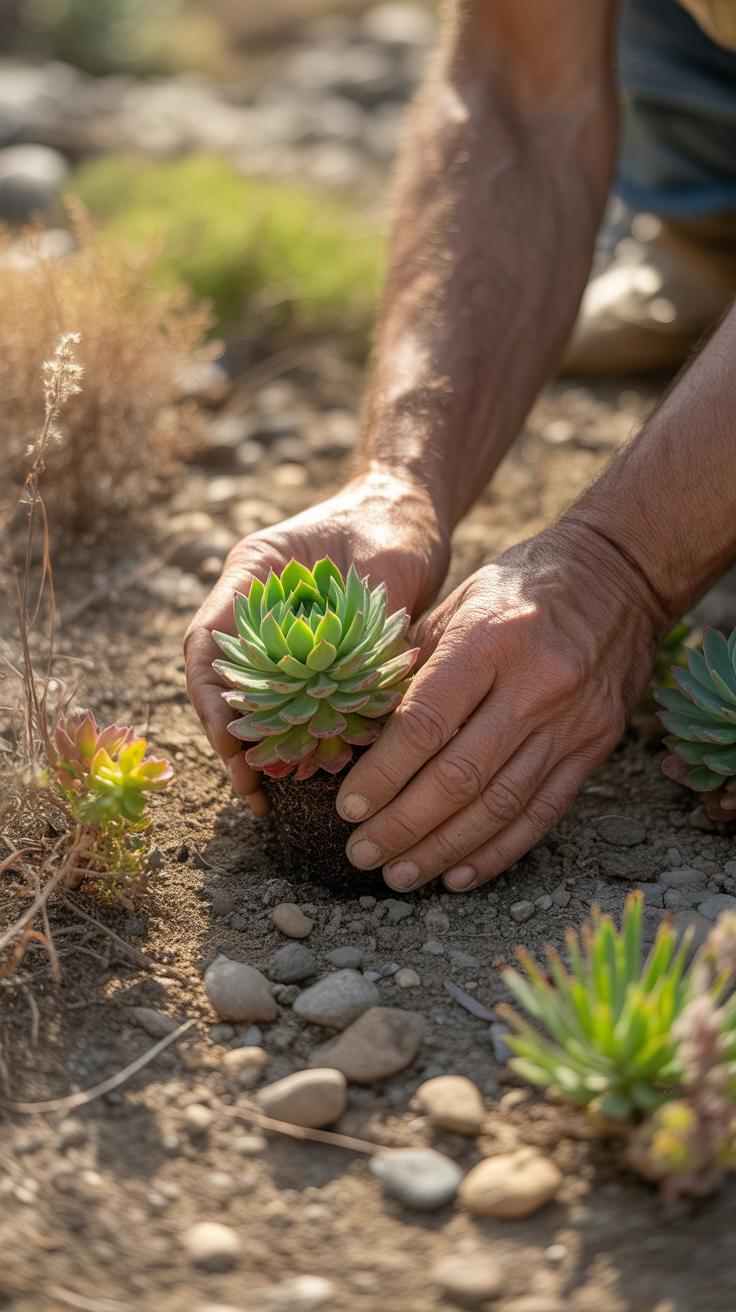
Native plants tend to fit naturally with the local rainfall and climate, which means they usually need less extra watering to thrive. They’ve evolved in your area’s specific conditions—soil, temperature swings, and precipitation patterns—so they’re well adapted to handle dry spells without much fuss. I’ve found that using them in my garden reduces stress on both the plants and my watering system.
Finding native plants can be a bit of a journey. You might start by checking with local botanical gardens or plant nurseries that specialize in regional flora. Online databases and community gardening groups can also point you in the right direction. Sometimes, you just have to wander outside and notice what’s growing wild around you—that’s often a clue to what will do well in your own yard.
One of the biggest perks of native species is how they support local wildlife—things like bees, butterflies, and birds use these plants for food and shelter. Plus, they usually demand less maintenance. They aren’t part of some complicated watering schedule or feeding program. So, you get a greener, more sustainable garden without feeling like you’re always chasing after the next problem.
Using Succulents and Cacti
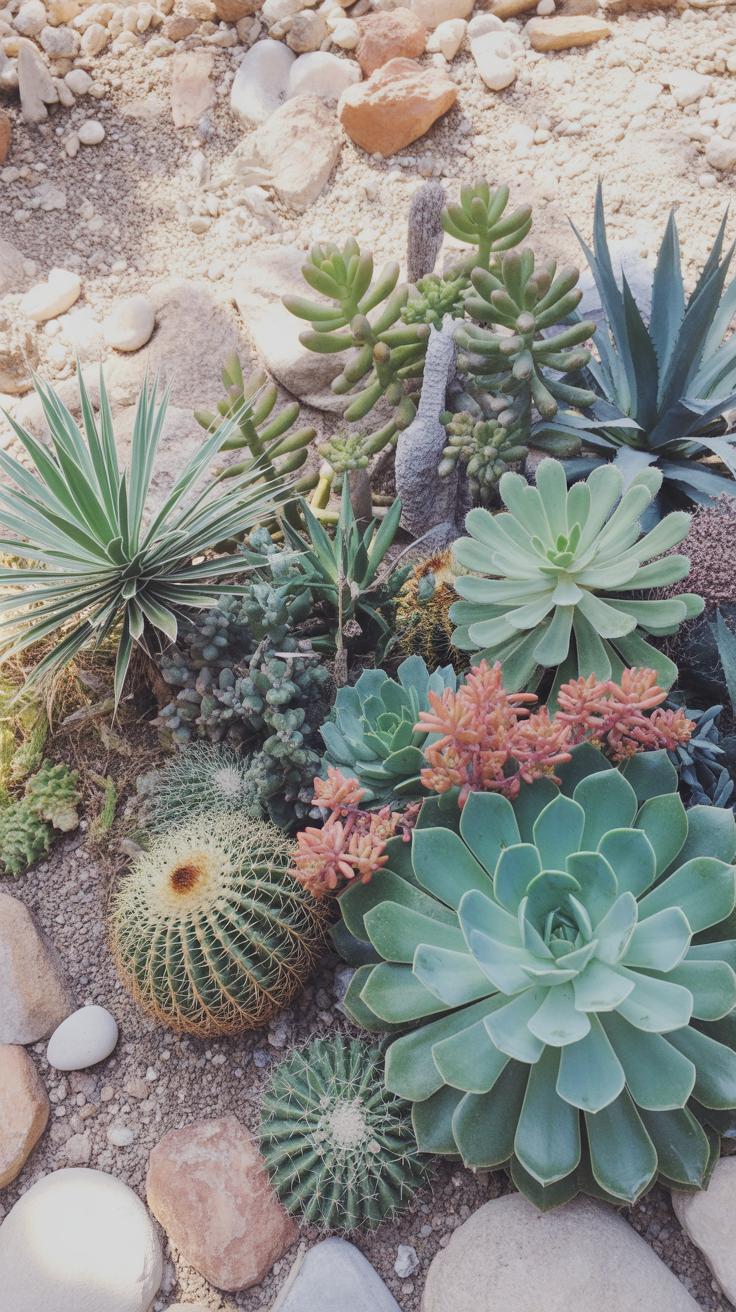
Succulents and cacti survive on very little water because of their unique adaptations. Their thick, fleshy leaves or stems store moisture, allowing them to endure dry spells that would wilt other plants. Many have waxy coatings or tiny hairs that reduce water loss by slowing evaporation. Some even open their stomata only at night to conserve water during the heat of the day, which seems almost like a clever trick of nature.
Popular succulents for waterwise gardens include aloe vera, jade plant, hens-and-chicks, and echeveria. These plants usually prefer well-drained soil and bright, indirect sunlight. They don’t need frequent watering—once the soil dries out completely usually works best. Overwatering can easily cause root rot, which is something I found out the hard way when I first tried to grow echeveria indoors.
Cacti care is similar but a bit more forgiving in some ways. Most cacti need a lot of light and minimal water, especially in cooler months when they go dormant. Avoid letting water sit in the base of the pot since that can cause rot quickly. You can water deeply but infrequently, maybe every few weeks depending on your climate and pot type. I’m still experimenting with different watering schedules, so if your cactus looks a bit unhappy at first, don’t panic—adjust and learn as you go.
Maintaining Your Garden Sustainably
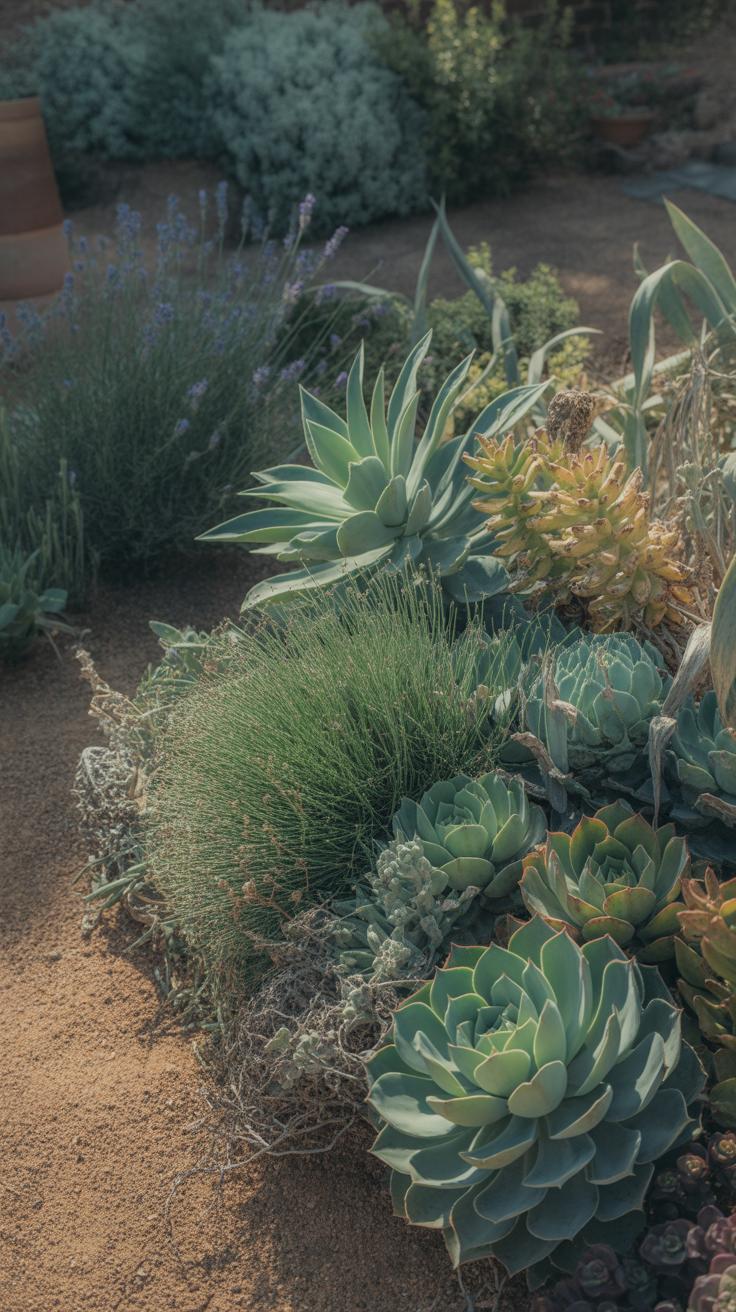
Caring for a drought tolerant garden isn’t just about choosing the right plants—it’s also how you manage them afterward. Watering should be infrequent but deep, encouraging roots to grow downward rather than spread near the surface. I find that early morning watering works best; the sun hasn’t dried everything out yet, so less water evaporates.
Pruning often feels like a chore, but with drought tolerant plants, you can keep it minimal. Trim only dead or damaged parts, and avoid shaping your plants too much. Letting them grow naturally reduces stress and water needs. Often, less fuss leads to stronger plants.
Low Maintenance Practices
Simple steps save a lot of effort and water in the long run:
- Mulch generously to keep soil moist and cool—organic mulch breaks down slowly, feeding the soil.
- Remove weeds regularly since they compete with your plants for water.
- Keep an eye on soil texture; if it compacts, gently loosen the surface to allow better air and water flow.
- Use slow-release fertilizers sparingly; too much can push growth that requires more water.
These basic habits mean you spend less time fixing problems later.
Monitoring Plant Health
It’s easy to miss subtle signs of stress when you’re busy, but paying attention can save a plant. Check for:
- Wilting or drooping leaves—an early sign your plants need water or have root troubles.
- Yellowing or browning tips, which might suggest drought or nutrient issues.
- Unusual spots or discoloration that could point to pests or disease, which sap resources.
- Changes in growth patterns, like stunted new shoots.
If you notice any of these, pause and consider your watering schedule and soil conditions. Sometimes adjusting water timing or replacing mulch makes all the difference. I’ve learned that a quick check every few days helps catch problems while they’re still manageable, rather than waiting until plants look really stressed.
Design Ideas to Enhance Beauty
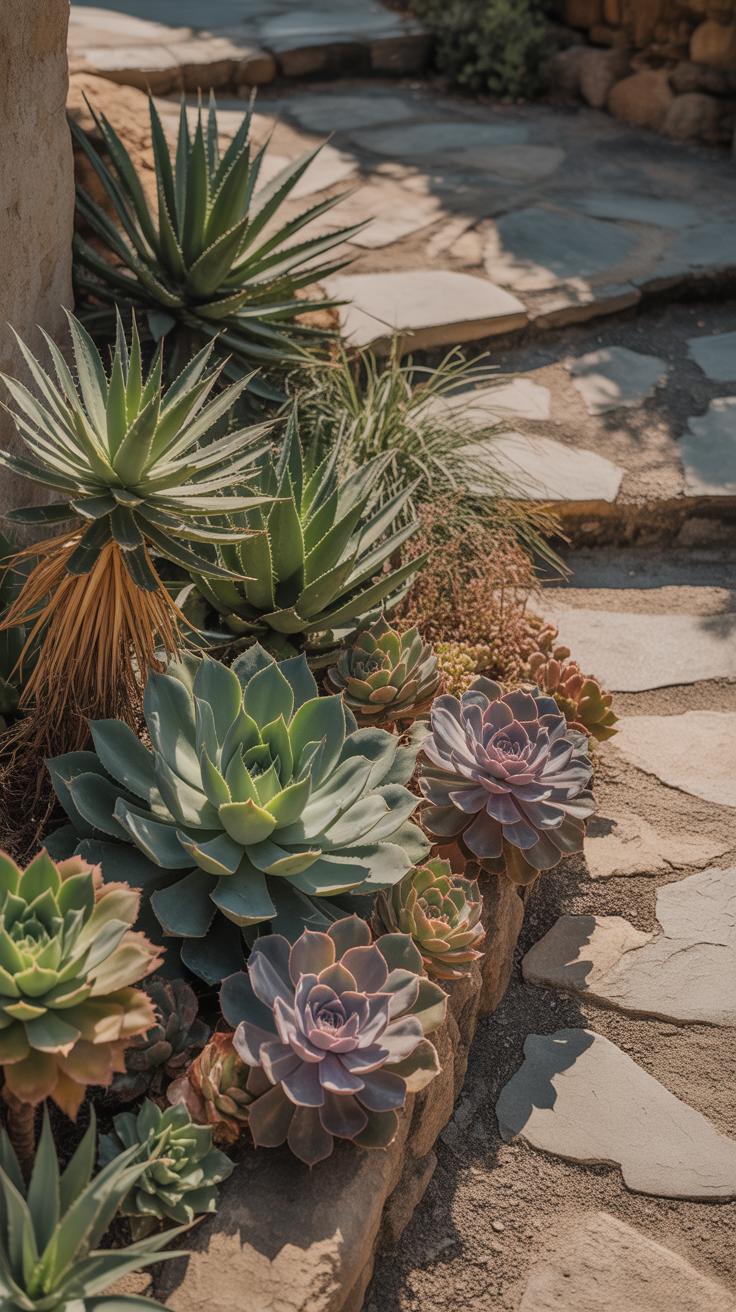
When you think about a drought tolerant garden, it’s easy to picture something sparse or dull. But that isn’t necessarily true. You can create a vibrant, interesting space by carefully choosing colors and textures that complement each other, whether in plants or hardscape elements.
Try combining the silvery-gray leaves of lavender or sage with deep green succulents; it breaks up the monotony and adds depth. Textures matter, too—rough bark, smooth stones, and delicate foliage together make the eye linger. Maybe mix in gravel paths or terracotta pots to bring warmth and balance.
Focal points help your garden tell a story. A boldly shaped cactus or a twisted olive tree can command attention without needing much water. Placing a stone bench or a simple sculpture near these unique plants invites pause and appreciation. It’s about drawing the eye where you want it, creating pockets of interest throughout the space.
Have you ever noticed how a single bright flower or an unusual pot can change the feel of an entire garden? Don’t hesitate to experiment with unexpected plant choices or an asymmetrical layout. Sometimes, a little imperfection makes things feel more natural and a lot more charming.
Saving Water Beyond the Garden
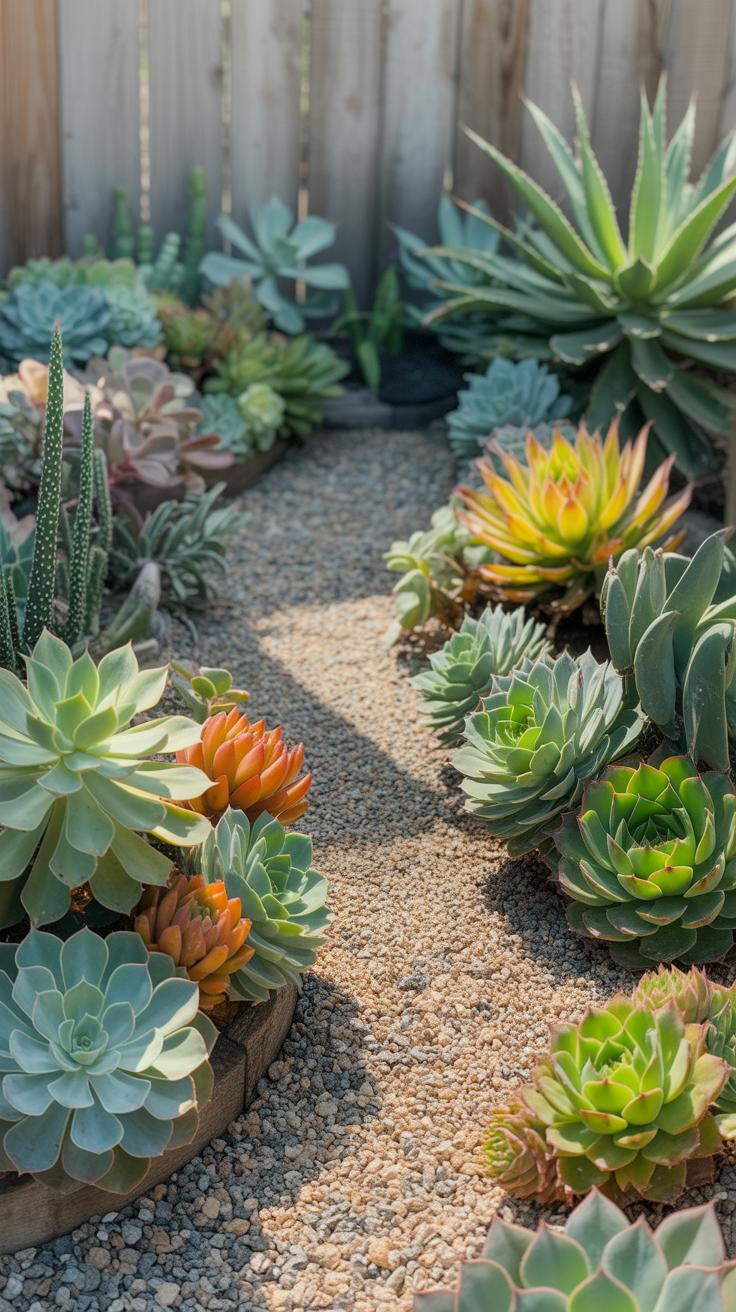
Water conservation doesn’t stop at your plants. If you want to really cut back, it helps to look at your entire home and yard. Small changes indoors can make a surprising difference outside, and vice versa. For instance, think about collecting rainwater. It’s simpler than you might expect.
Collecting Rainwater
All you really need is a rain barrel or even a large container placed under a downspout. When it rains, the water collects, ready to be used later for your garden. It reduces your water bill and gives your plants natural, untreated water. You can get creative here—maybe add a screen to keep leaves out or connect several barrels for a bigger supply. I remember installing one last spring and, honestly, it felt rewarding to watch the water level rise during a storm. Using that water made me feel less dependent on municipal supplies.
Water Smart Lifestyle
A few simple habits indoors can save gallons every day. Turning off the tap while brushing your teeth or fixing leaks quickly can add up. Outdoors, try watering early in the morning or late at night to limit evaporation. Maybe rethink how often you wash your car—using a bucket versus a hose works well. Even changing household routines—like running full laundry loads—helps. You might find some habits stick, others slip, but even trying is worthwhile. It’s about gradually connecting your daily life to a broader water-saving effort that supports your garden and your home at once.
Conclusions
Creating a drought tolerant landscape in your home garden helps save water and lowers the time and money spent on garden care. Using plants that suit your local climate keeps them healthy with little water. Managing your soil and watering smartly also helps your plants grow better with less water.
By planning your garden with drought tolerant ideas, you can enjoy a nice garden without wasting water. These simple changes protect water resources and make your garden easier to manage.


